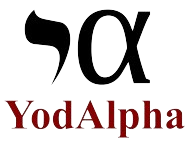This is the first of the series of final reports on the excavations at the Hellenistic city of Maresha, and documents the work in the extensive man-made subterranean complexes below the lower city during the 1980s. Three subterranean complexes are presented here (70, 21, 44–45), including the study of their architecture, pottery and small finds and the industries that took place there. Chapters 1 and 2 present the setting of the site and review previous excavations, while Chapter 9 summarizes all the data in order to present a human face for the finds uncovered here.
EISBN
9789654065566
Publication Date
2003
Publisher
Israel Antiquities Authority
City
Jerusalem
Keywords
Judean Shephelah, Hellenistic necropolis, subterranean complexes, columbarium, amphora stamps
Disciplines
Historic Preservation and Conservation | History of Art, Architecture, and Archaeology | Life Sciences | Religion | Social and Behavioral Sciences
Recommended Citation
Kloner, Amos, "Maresha Excavations Final Report I: Subterranean Complexes 21, 44, 70" (2003). IAA Reports—Monograph Series of the Israel Antiquities Authority. 60.
DOI: https://doi.org/10.69704/iaaRepV000.1996.60
https://publications.iaa.org.il/iaareports/60
Download Full Text (24.4 MB)
Download Front Matter (42 KB)
Download Preface (30 KB)
Download Chapter 1: Introduction (372 KB)
Download Chapter 2: Overview of the Excavation (2.4 MB)
Download Chapter 3: Subterranean Complex 70 (1.1 MB)
Download Chapter 4: Subterranean Complex 21 (965 KB)
Download Chapter 5: Subterranean Complexes 44 and 45 (3.2 MB)
Download Chapter 6: Pottery and Small Finds from Subterranean Complexes 21 and 70 (3.4 MB)
Download Chapter 7: Pottery and Small Finds from Subterranean Complex 44 (89 KB)
Download Chapter 8: Amphora Stamps and Imported Amphoras (480 KB)
Download Chapter 9: Summary and Conclusions (34 KB)
Download Appendix 1: Maresha: Selected Bibliography (52 KB)
Download Appendix 2: Typology of the Persian and Hellenistic Pottery Forms at Maresha—Subterranean Complexes 70, 21, 58 (1.8 MB)

















